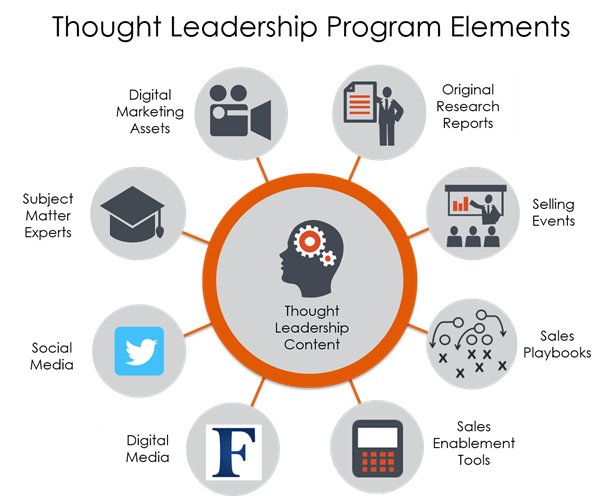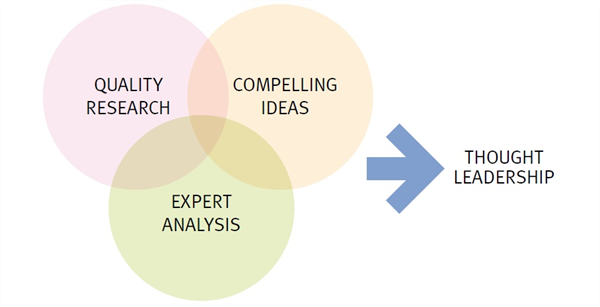“Business buyers don’t ‘buy’ your product or service, they ‘buy into’ your perspective and approach to solving their problems.” – Jeff Ernst, Buyer Persona Institute
The brutal truth is that most prospects yet don’t care about your company, its products, or its services. Most aren’t visiting your website to read product specifications and look for (and fail to find) pricing. If they find your site at all, it’s typically through searching for solutions to problems they face. If you can demonstrate an awareness of their problems, and propose solutions that resonate with them, you can win their business.
But the irony is that winning their business often requires you to step back and stop selling. Laura Ramos, a principal analyst at Forrester, discusses this as part of the role of PR in content marketing and thought leadership:
The practice of developing content, some of which may become thought leading, on important topics your clients and target prospects face, is a practice with which digitally savvy PR people will have a strong affinity. Let’s take a closer look at the definition of PR:
public relations (noun)
1. the actions of a corporation, government, individual, etc., in promoting goodwill between itself and the public, the community, employees, customers, etc.
2. the art, technique, or profession of promoting such goodwill.
Isn’t the publishing of audience-relevant, business focused content an act of goodwill? Yes, but only if the marketers keep the selling out of the mix.…
In this Age of the Customer, marketers must move from selling to an audience to building relationships and trust across a community of stakeholders. And the advantages of PR to stimulate conversation, engage in two-way interactions, and develop interesting storylines that involve the intended audience are a natural fit for creating great marketing in this new digital world.
Thought leadership typically requires innovative thoughts. And that innovation often comes from framing and conducting original research.
- For instance, every year Evergage conducted annual studies on the state of marketing personalization, identifying the trends and outlook for marketers looking to provide personalized web and app experiences. This led to coverage in Forbes, CMO magazine, MediaPost, eMarketer, eWeek, Banking Exchange, and dozens of marketing publications and blogs. When the company was acquired by Salesforce, Salesforce cited our Trends in Personalization study as part of why the company made Gartner’s Personalization Engines Magic Quadrant as a leader in the industry.
- Dell made news around the world by using a multinational survey to make the point that video gamers aren’t just teenage boys but include men and women of all ages.
Original research reports such as these often provide a foundation for many different types of thought leadership content, as in this diagram shared by Marrianne Dunning Nouwens of Phillips:

Research can inspire white papers (hidden behind lead generation forms), blog posts, tweets and other social media updates, webinars, presentations – as well as, of course, news releases (but make sure to follow best practices that will maximize the likelihood that journalists cover your news).
But original research alone is not enough. As Elite Media illustrated, it must be coupled with compelling ideas (otherwise why would anyone be interested?) and expert analysis (to put the research into a wider context).

For the companion brutal truth to the one we started with is that most journalists don’t yet care about your company either. They are interested in industry trends and, if they discuss your company at all, will do so as part of wider trends that they are observing.
Thought leadership programs are essential channels to reach both journalists and B2B buyers.
Updated from a post originally published 2017-11-17.
